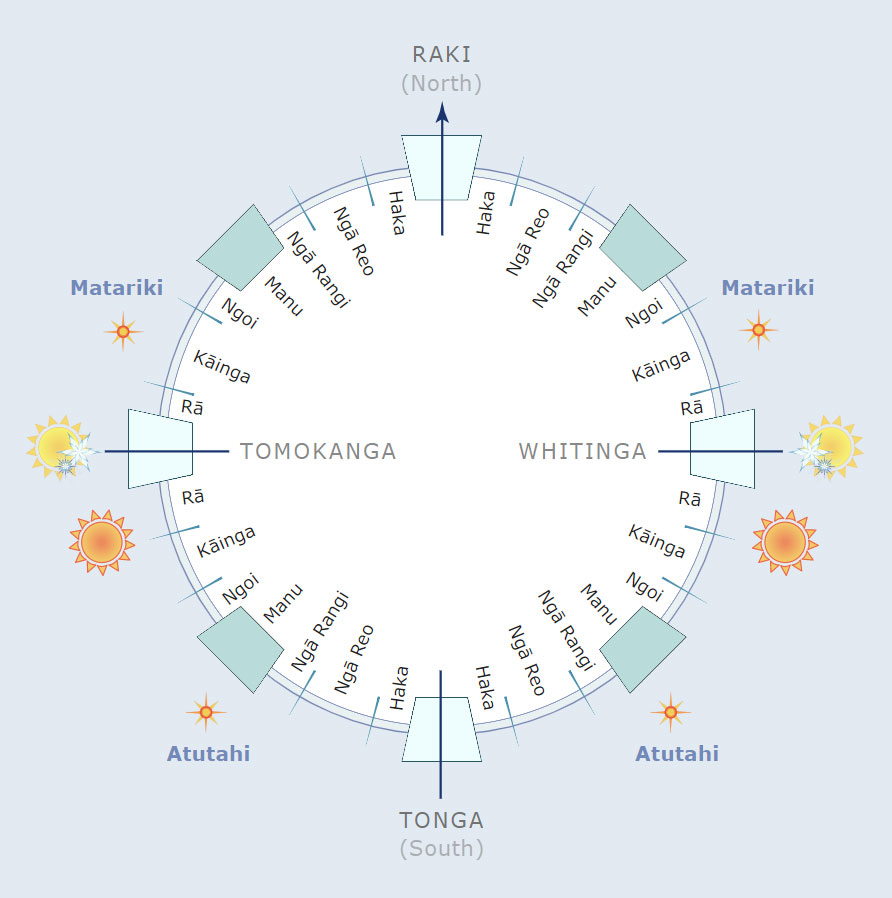
Te kapehu whetū – the Māori star compass – divides the 360 degrees around a canoe in the open ocean into different whare (houses). The location of these houses depends on where the sun, moon and stars set and rise. The navigator then attempts to keep the canoe on a course relative to these observations.
In the early 1970s members of the Polynesian Voyaging Society in Hawaii searched for Polynesians who remembered traditional navigation techniques. At first they thought there was no one, but they eventually tracked down Mau Piailug from the island of Satawal in Micronesia, who could navigate the open ocean without instruments. He guided the Hōkūle‘a from Hawaii to Tahiti and back using a star compass, shown here. Mau Piailug shared his knowledge with Nainoa Thompson, who became the first Polynesian in centuries to use celestial navigation on long distance ocean voyaging when he repeated the journey in the same vessel in 1980.


This diagram shows a canoe, looking from above. The 360° horizon around the canoe was divided up into different sectors named ‘houses’ and these were marked on canoe railings. Navigators would know that the arcs of the sun and other stars cross the sky at different heights depending on the time of year. This canoe is travelling due north at the spring equinox, when the sun rises due east and sets due west. At night the rising and setting of stars were used to align the canoe in a direction of travel. For example, when Star A set, Star B was used, and so on through the night until the earth’s own star, the sun, rose. The sun was used at dawn and dusk.
What are the 7 stars of Matariki?
Many iwi speak of the seven Matariki stars as a mother and her daughters. The mother is Matariki, and her daughters are Tupu-ā-nuku, Tupu-ā-rangi, Waipunarangi, Waitī, Waitā, and Ururangi.
Today, we look at the meaning of Matariki. Matariki is the Māori name for the Pleaides star cluster. It rises during mid-winter and marks the beginning of the Māori new year. The word is an abbreviation of Ngā Mata o te Ariki (Eyes of God) in reference to Tāwhirimātea, god of the wind and weather
What are the 7 stars of Matariki?
Many iwi speak of the seven Matariki stars as a mother and her daughters. The mother is Matariki, and her daughters are Tupu-ā-nuku, Tupu-ā-rangi, Waipunarangi, Waitī, Waitā, and Ururangi.
Today, we look at the meaning of Matariki. Matariki is the Māori name for the Pleaides star cluster. It rises during mid-winter and marks the beginning of the Māori new year. The word is an abbreviation of Ngā Mata o te Ariki (Eyes of God) in reference to Tāwhirimātea, god of the wind and weather

